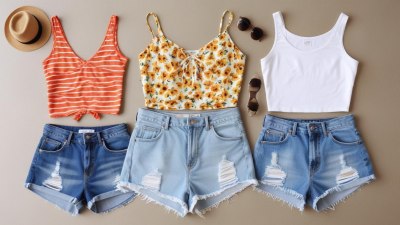The Real Reason You’re Sweating in the Shade It’s Not Just You
Discover why you sweat in the shade and the science behind it in this comprehensive guide.

This image was created with the assistance of Freepik
Sweating is a natural bodily function that helps regulate our temperature. However, it can sometimes feel paradoxical when we find ourselves sweating even in the shade. One might think that seeking shade would provide relief from the heat and, consequently, decrease the need to sweat. Yet, many people still find themselves perspiring while trying to cool off under a tree or awning. This phenomenon can be perplexing and might lead you to wonder what exactly is causing it. In this article, we will explore the real reasons behind this seemingly strange occurrence and delve into the science of sweating.
Understanding Sweating
To grasp why you might be sweating in the shade, it's important to understand the physiological process of sweating. Sweating is primarily a response to an increase in body temperature. When your internal temperature rises due to external heat, physical activity, or even emotional stress, your body activates its sweat glands to release moisture onto the skin's surface. As this sweat evaporates, it cools the body down, helping to maintain a stable internal temperature.
The Role of Humidity
One significant factor in sweating is humidity. The amount of moisture in the air can have a considerable impact on how effectively sweat evaporates. In high humidity conditions, even if you are in the shade, the air is saturated with moisture, making it difficult for sweat to evaporate. As a result, your body may continue to produce sweat because it senses that it is overheated, despite your seemingly cooler surroundings. This sensation can lead to the uncomfortable feeling of sweating even when you're out of direct sunlight.
Shade Isn’t Always Cool
Another factor contributing to sweating in the shade is the ambient temperature. While shade can offer some relief from direct sunlight, it does not necessarily mean the temperatures are substantially lower. In some cases, the temperature in the shade can still be quite high, especially on a hot summer day. On hot days, shade does provide cooler conditions compared to direct sunlight, but it doesn't negate the heat entirely. Thus, even in the shade, your body might still need to cool itself down through sweating.
Acclimatization and Sweat Response
Individuals' bodies respond differently to heat, and factors such as acclimatization play a significant role in sweating patterns. People who are accustomed to warmer climates tend to sweat more efficiently than those from cooler regions. When you are acclimatized to heat, your body may sweat more readily as a means of dealing with rising temperatures, even if you're not in direct sunlight. This heightened sweat response can lead to perspiring in the shade.
Physical Activity and Sweating
Engaging in physical activity significantly impacts sweating. If you are walking, jogging, or engaging in any form of exercise, your body generates heat. Even if you step into the shade, your body's temperature may still be elevated due to the physical exertion. In these situations, your body may continue to sweat to regulate your internal temperature, regardless of your shaded environment.
Emotional Factors and Sweating
It's not just environmental factors that influence sweating; emotional stress can also lead to increased perspiration. Feelings of anxiety, nervousness, or excitement can trigger your body's fight-or-flight response, resulting in sweating. Even if you are sitting in the shade, stress-induced sweating can still occur, making it seem like the heat is following you everywhere. This form of sweating is a normal response and often occurs in areas such as the palms, underarms, and face.
The Type of Clothing You Wear
Your choice of clothing can also affect how much you sweat, regardless of whether you're in the shade or not. Wearing tight-fitting, non-breathable materials can trap heat and moisture, leading to increased sweating. On the contrary, lightweight, breathable fabrics can help wick away sweat and facilitate evaporation, allowing your body to cool down more effectively. It's crucial to consider your clothing choices when spending time outdoors, especially in hot weather.
Staying Hydrated
Hydration plays a crucial role in managing your body's temperature and sweat production. When you are dehydrated, your body struggles to regulate its temperature effectively. This can cause you to sweat more, even in cooler shaded areas. Staying adequately hydrated helps your body maintain a balanced internal environment and can reduce excessive sweating in situations where you might otherwise feel comfortable.
When Is Sweating a Concern?
While sweating is typically a normal physiological response, you should be aware of excessive sweating, known as hyperhidrosis. This condition can lead to uncomfortable situations and physical issues and may require medical intervention if it becomes problematic. If you find that you are sweating excessively in situations where it does not seem warranted, or if it interferes with your daily life, it may be wise to consult a healthcare professional for advice.
Tips to Manage Sweating in the Shade
If you're consistently sweating in the shade and find it uncomfortable, there are several strategies you can employ to manage it more effectively. First, ensure you wear appropriate clothing made from breathable fabrics that allow for cooling. Additionally, practice proper hydration before, during, and after physical activity or exposure to heat. Consider using antiperspirants that contain aluminum chloride, which can help block sweat glands and reduce overall sweat production. Lastly, be mindful of your emotional state; practicing relaxation techniques can help manage stress-induced sweating.
Realizing that sweating in the shade is a common experience can provide comfort and understanding. The interplay of humidity, ambient temperature, acclimatization, physical activity, emotional response, clothing choice, and hydration all contribute to this natural bodily function. By recognizing these factors and employing strategies for managing excessive sweating, you can feel more comfortable and confident, regardless of your surroundings. Ultimately, sweating is a valid response; by understanding its triggers and managing them proactively, you can navigate hot and humid conditions with ease.











